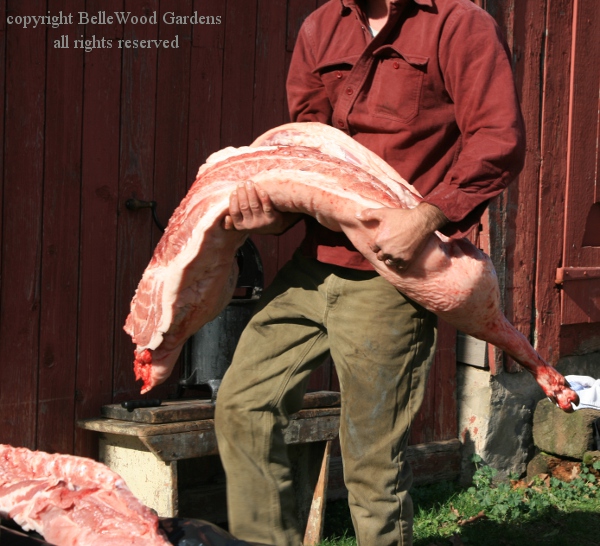
.
If you have any comments, observations, or questions about what you read here, remember you can always Contact Me
All content included on this site such as text, graphics and images is protected by U.S and international copyright law.
The compilation of all content on this site is the exclusive property of the site copyright holder.
I'm not sure that the majority of people know from where on the animal the different cuts of meat come from. It used to arrive at the butcher shop as a side of beef or half a pig, to be skillfully broken down from primal cuts to the consumer-size pieces. Today? Go to the supermarket. The meat counter has nice tidy plastic-wrapped packages: steaks and chops and roasts and ground meat.
Always a popular event at the Howell Living History Farm, the Sausage, Scrapple, Bacon event demonstrates how a side of pork is butchered. The farming family that skillfully cuts the meat and answers questions has been doing this presentation for 28 years. At home on the farm, they do it for themselves. Here. they're showing how it is done. It's a typically chilly November day, the time of year and kind of weather when these activities would occur.

Live weight on these pigs was about 250 to 260 pounds. About 60 to 65% will be meat. Most of us are familiar with the choicer cuts - the pork chops, ham, tenderloin. When you are raising your own meat, the more of the animal that you can use the better. It is also, to me, respectful. If an animal dies so I can eat, don't waste. Sausage, from the less choice cuts of meat. Scrapple, made from the trimmings and organ meats. Bacon, fresh or smoked, from the belly. Lard, an excellent fat for making flaky pastry, and frying.
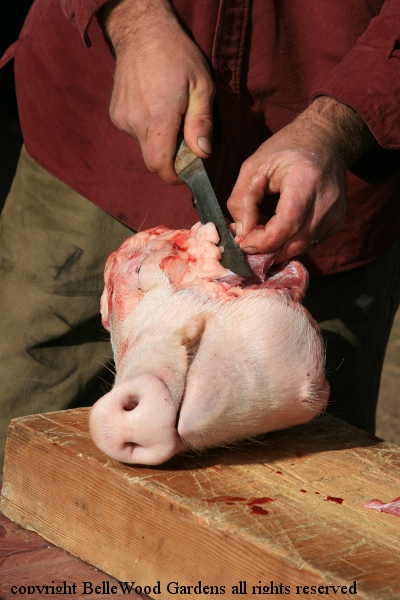
Head cheese, also known as brawn, is made from the head. A version pickled with vinegar is called souse. Made from the head of a calf or pig, the bits of cooked meat are set in aspic. That's not being done here today, but the good meat from the jowls will be used for scrapple. In Italy it would become guanciale similar to the jowl bacon of the United States.
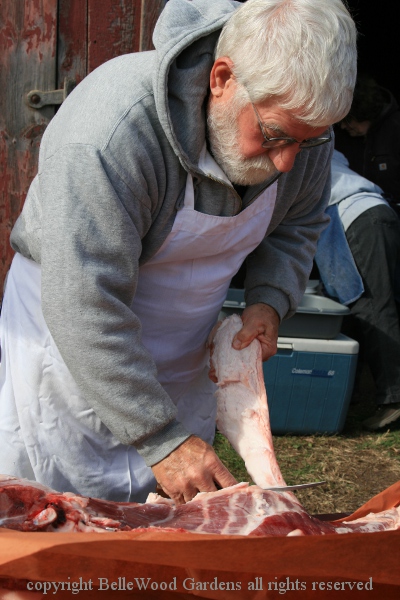
The fine quality leaf lard is being trimmed from around the kidneys. It will be coarsely chopped, then rendered down. The liquid fat will be strained, then put into containers and frozen for long term storage.
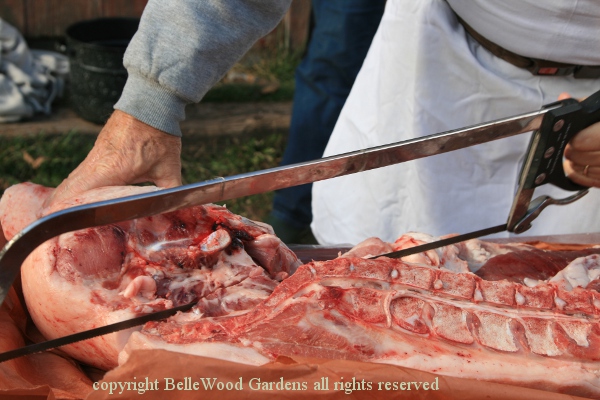
Sawing through the bone to free the ham from the rest of the skeleton.
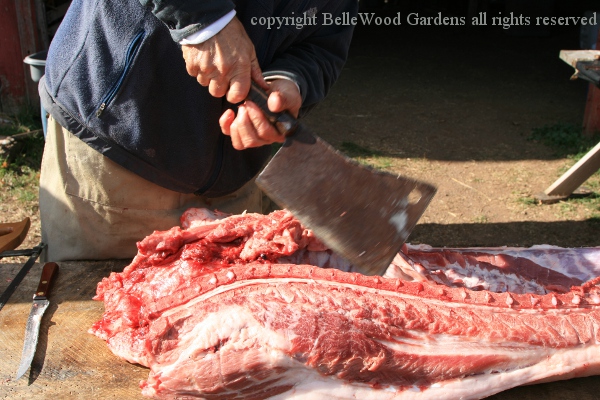
Using a cleaver to free the ribs from the backbone. You like spareribs, right?
Well, this is where they come from.
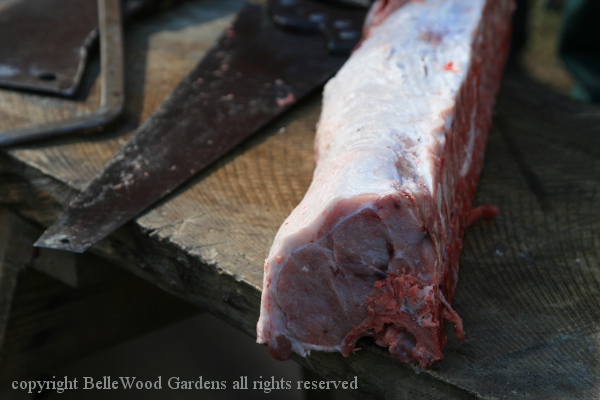
Pork loin. It could be a loin roast or, more commonly, cut into pork chops.
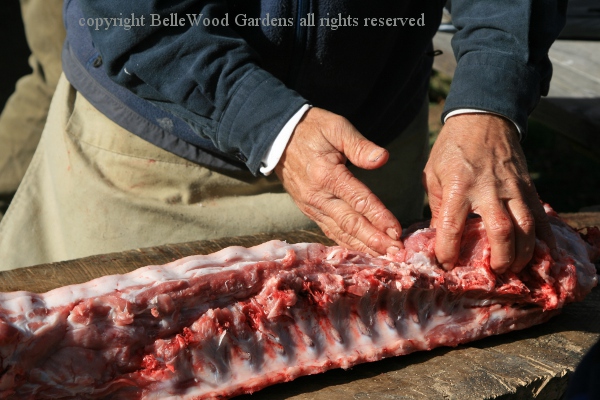
Here's where to cut, between the bones.
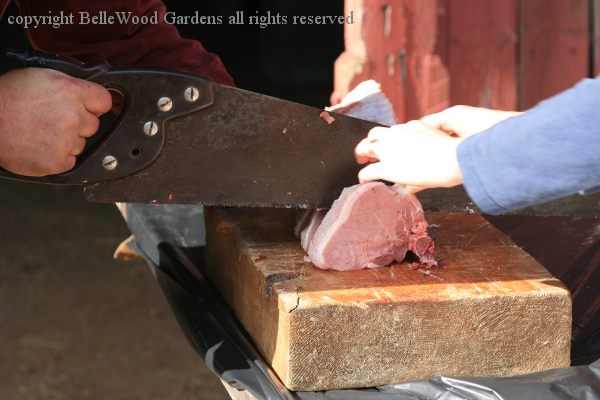
Today, with the hand saw they're using, the chops are one bone thick, thick enough that you could make a pocket in the meat for stuffing. A butcher shop uses a band saw and can cut thinner chops, as the saw easily slices right through the bone.
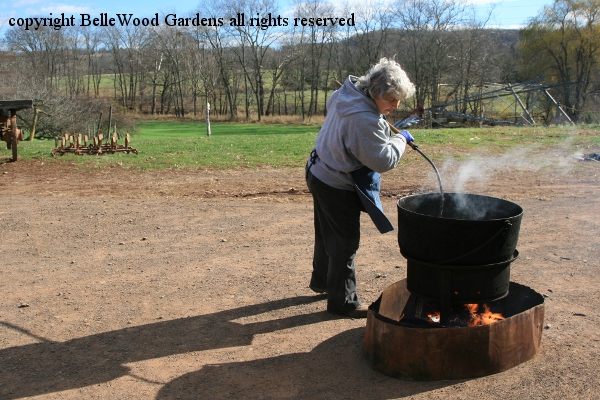
On the farm scrapple making was one of the last things done, late in the day. Bones and bits and pieces, water added, would be cooked in a heavy pot over a fire, frequently stirred to prevent sticking and burning. Typically made from the head, heart, liver, and other bits and pieces, boiled with any attached bones to make a broth. Once cooked, bones and fat are removed, the meat is reserved, and cornmeal is boiled in the broth to make a mush. Next, the finely minced meat is returned to the pot and seasonings - sage, thyme, black pepper - are added.The scrapple is formed into loaves and allowed to cool thoroughly until set. So when you fry up some scrapple for breakfast its already been cooked twice.
Think I'll go back to the visitors center. Today the kitchen is offering pulled pork sandwiches, sausage stew, and maple syrup skewered bacon on their menu. Time for lunch!
Back to Top
Back to November 2015
Back to the main Diary Page